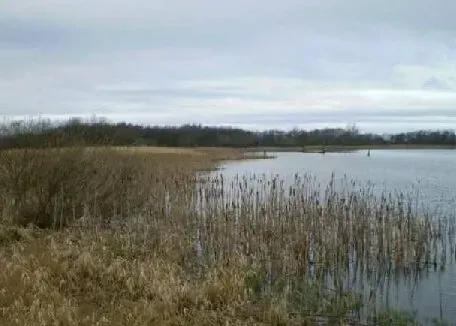Big Waters
Big Waters is one of the largest subsidence pond in South East Northumberland. Surrounded by fen and carr the land around the lake is generally flat, rising to the Northeast. Big Waters covers an area of almost 50 hectares, which includes the lake, stream, ponds, marshland, grassland and woodland.
Walking, picnicking, fishing, bird watching and nature studies.
There is approximately a population of 12,000 in a 2km radius of Big Waters. This includes several small centres of population including Brunswick Village, Hazlerigg, Seaton Burn and Wideopen. Nearby sites include Three Hills and Havannah Nature Reserve; all of which are the result of reclaimed colliery workings. Consequently, the landscape has been affected and influenced by past mining activities such as the closed Brenkley Colliery. The agricultural land around Big Waters has undergone transformation including hedge laying, planting, and wetland management.
The pond itself was formed in the 1920’s as a result of mining subsidence along Hartley Burn flooding the surrounding pasture land, and was impounded by tipped colliery shale from Dinnington Colliery which is now Brunswick Industrial Estate. The late 1960’s saw the construction of the A6125 Dual Carriageway which cut off access from Little Big Waters to the main lake.
The reclaimation of the site was initially carried out by the Northumberland County Council from 1969 to 1974 to a plan produced by the University of Newcastle Landscape Department. The lake was retained and the land stabilised, while the waste was spread, capped with sub-soil and reclaimed to pasture amenity grassland and mixed plantation. The site was used by the University for experimental planting to study pasture development. This resulted in a wide variety of trees planted around the site.
The site is enhanced by a variety of closely associated habitats including a meadow with an area of rigg and furrow pasture and woodland planted in the 1960’s. The site lies within a ‘wildlife corridor’ from Hartley Burn to Seaton Burn and is linked to a strategic wildlife corridor which stretches from Gosforth Park to East Wideopen.
The open water is fringed by reeds, swamp and associated fen, backed by areas of herb rich damp grassland. The western part of the lake is still managed by the Northumberland Wildlife Trust. The park is very popular with dog walkers so the earlier in the day you visit the less crowded it will be.Resident species include those you would expect from this kind of habitat, but notable birds include a large colony of tree sparrow and in summer artificial island platforms provide a safe nesting site for common tern.Warblers include sedge and grasshopper and one or two pairs of reed warbler.There is always something intersting on the reserve, which has also attracted its fair share of rarities over the years including marsh warbler.
Access at all times. The hides are locked and only available to NWT members.
Birds you may hear at Allen Banks
Big waters has something of interest all year round. May is the month for songbirds including summer visitors such as Sedge Warbler and Blackcap.



